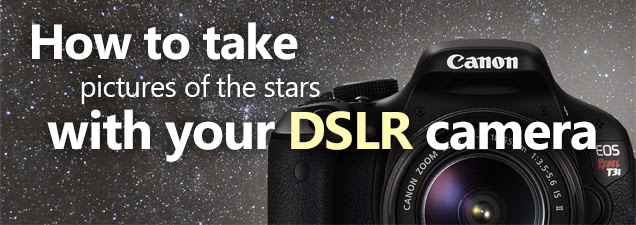
Here is a basic guide to taking pictures of the stars and milky way with your DSLR camera!
Now that the camera is on the proper mode, you will need to apply some additional settings to maximize the brightness and the amount of the stars, nebulae and galaxies. Getting photos of the night sky is all about letting as much light into the camera as possible. That means you will want a large aperture to maximize the light you let in. On my camera lens, that is a setting of F3.5. The lower the F-number, the more light the camera brings in.


For our purposes, Auto White Balance or Daylight White Balance works just fine. You also want to make sure that you are shooting your photos in RAW format. This gives you the opportunity to really bring out the images full potential in post-processing. You will need Adobe photoshop to make these adjustments, so if you don't have it, a .JPG photo will have to do!
FOCUS
To acheive proper focus of the stars, do not use autofocus. Manually focus your lens to infinity, then focus back a hair. Take some test shots and try to get the stars to look as tight as possible. Another way to achieve focus is to use the live-view mode of your camera, and focus on something far away (like a street lamp). Zoom-in while in live-view to really get it right.
STAR TRAILS
In a 30 second exposure, you will notice small star trails because of earths rotation. (Yes, even in 30 seconds!) The star-trailing is subtle, and will not effect the overall look you are trying to achieve. If the stars are trailing too much for your liking, knock your exposure down to 20 seconds if you wish.


Set your drive mode to a 2 or 10 second delay to avoid shaking the camera slightly when activating the shutter. You can find this option in the Even the slightest movement (like pressing the shutter button) can be enough to create a shaky shot! The drive mode option screen should look something like this:

THINGS TO WATCH FOR
Make sure that your lens has not fogged up, or your shots will look blurry. A blow dryer will remove dew if necessary. Light pollution is your biggest enemy when it comes to astrophotography. Get as far away from city lights as possible for your star shots. If there is a city glow near you, point away from it. You may find that a shot in the city using a high ISO and long exposure produces a very bright, washed-out photo. If this is the case, bump your ISO down, and shoot a shorter exposure. eg. (ISO 800, 15 seconds)